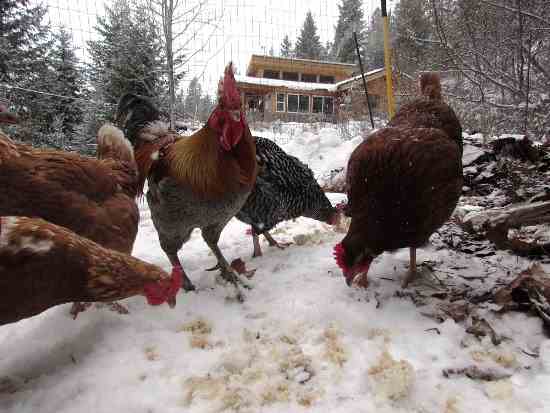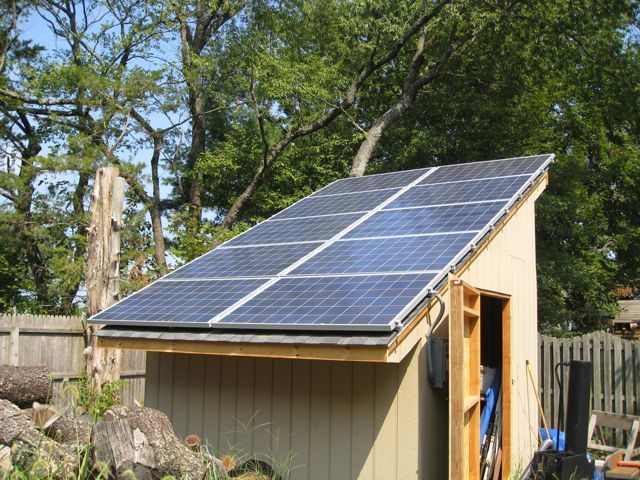As more individuals and families seek to live off the grid and rely on sustainable practices, interest in cold hardy livestock has grown.
These animals can survive extreme winter weather, providing an efficient solution for homesteaders who wish to become self-sufficient.
We’ll delve into the world of cold hardy livestock and provide actionable tips on how to raise these resilient creatures in challenging climate conditions.
We will cover various breeds of cattle, poultry, swine, sheep, horses, goats, and rabbits that can thrive during harsh winters and the essential preparation and care required for their well-being.
Choose the Right Animals
Select breeds that are known for their cold hardiness, such as Dexter cattle, Finnsheep, and Romney sheep. These breeds have been bred over the centuries to withstand harsh winter conditions.
Some of the best breeds for cold climates include Dexter cattle, Finnsheep, and Romney sheep.
These breeds have been bred over the centuries to withstand harsh winter conditions, and they have developed unique characteristics that make them well-suited to thrive in cold temperatures.
Dexter cattle, for example, are a compact breed that originated in Ireland and are known for their hardiness and ability to thrive in cold climates.
They have a thick coat of hair that helps to insulate them in cold weather, and they are well-adapted to living on poor-quality feed.
Finnsheep, on the other hand, are a Finnish breed that is known for its robustness and ability to withstand harsh weather conditions.
They have a thick, double coat that helps to keep them warm in cold temperatures, and they are well-suited to living on pasture or other rough grazing.
Romney sheep are another breed that is well-suited to cold climates.
They have a thick, double coat that is rich in lanolin, which helps to protect them from the elements.
They are also known for their hardiness and ability to thrive in challenging conditions.
These breeds, and others like them, are well worth considering for your small farm if you live in a cold climate.
By choosing the right animals for your region, you can ensure that your farm is successful and productive, even in the coldest of winters.
Provide Shelter
Build a sturdy shelter that protects your animals from wind, snow, and extreme cold. The shelter should have adequate ventilation to prevent moisture buildup and protect your animals from drafts.
As the caretaker of a group of animals, providing shelter is a important aspect of their well-being.
A sturdy shelter can protect your animals from harsh weather conditions such as wind, snow, and extreme cold, ensuring their comfort and safety.
To build an effective shelter, consider the following features
* Durable materials: Use sturdy materials such as wood, metal, or plastic to construct the shelter.
The shelter should be well-ventilated to prevent moisture buildup and protect your animals from drafts.
* Insulation: Insulate the shelter to keep it warm and cozy for your animals.
This can be achieved through the use of insulation materials such as hay, straw, or foam.
* Wind and snow protection: Make sure that the shelter is designed to protect your animals from wind and snow.
This can be done by using a sloping roof to prevent snow accumulation and providing windbreaks to minimize the impact of strong winds.
* Ventilation: Provide adequate ventilation to prevent moisture buildup and ensure that your animals can breathe easily.
This can be achieved through the use of windows, vents, or screens.
By incorporating these features into your shelter design, you can ensure that your animals are protected from the harsh elements, keeping them healthy and happy.
Remember, a well-built shelter can mean the difference between life and death for your animals, so invest in a sturdy and functional design.
Feed and Nutrition
Make sure your animals have access to high-quality feed, especially during the winter months. Hay, silage, and grains can help maintain their weight and energy levels. Also, provide plenty of clean water.
During the winter, it’s important to ensure that your animals have access to high-quality feed to maintain their weight and energy levels.
Hay, silage, and grains are all excellent sources of nutrition that can help keep your animals healthy and happy.
In particular, hay is an excellent source of fiber, which is important for maintaining a healthy digestive system.
Silage, on the other hand, is high in protein and can help support muscle growth and maintenance.
It’s important to provide plenty of clean water to ensure that your animals are well-hydrated and able to digest their feed effectively.
By ensuring that your animals have access to a balanced diet and plenty of clean water, you can help them stay healthy and thrive throughout the winter months.
Health Checks
Regular health checks are important to ensure your animals’ health and well-being during the cold season. Monitor their temperature, respiratory rate, and pulse rate. Look for signs of pneumonia, hypothermia, or other illnesses.
During the cold season, it’s essential to prioritize your animals’ health and well-being through regular health checks.
These checks should be done daily, especially for animals that are more susceptible to illness, such as the elderly, young, or those with pre-existing conditions.
Start by monitoring your animal’s temperature, respiratory rate, and pulse rate.
A normal body temperature for most animals is between 99.5°F and 102.5°F, so if your animal’s temperature is below or above this range, it could be a sign of illness.
A healthy respiratory rate is usually between 10-30 breaths per minute, and a normal pulse rate is between 60-120 beats per minute.
Look for signs of pneumonia, hypothermia, or other illnesses that are common during the cold season.
These signs can include coughing, sneezing, difficulty breathing, shivering, and lethargy.
If you notice any of these signs, it’s essential to seek veterinary care immediately.
Remember to always consult with a veterinarian if you have any concerns about your animal’s health.
By prioritizing regular health checks and seeking medical attention when necessary, you can ensure your animals remain healthy and happy during the cold season.
Bedding and Bedding Materials
Provide clean, dry bedding materials such as straw, hay, or wood shavings to keep your animals comfortable and dry. This helps prevent frostbite, pneumonia, and other cold-related health issues.
Bedding and Bedding Materials: Providing clean, dry bedding materials for your animals is essential for their comfort and health.
Straw, hay, or wood shavings can all be excellent choices for bedding materials, as they absorb moisture and provide a dry, comfortable surface for your animals to rest on.
This helps prevent frostbite, pneumonia, and other cold-related health issues that can be exacerbated by wet or damp bedding.
In fact, wet bedding can be a breeding ground for bacteria and fungi, which can lead to a range of health problems in your animals.
By providing clean, dry bedding materials, you can help ensure that your animals stay healthy and comfortable throughout the winter months.
Warm Water and Sanitation
Keep their water troughs and feeding utensils clean and free from ice to prevent bacterial growth. Also, provide warm water for your animals to drink.
Keeping their water troughs and feeding utensils clean and free from ice is important to prevent bacterial growth and ensure your animals’ health and well-being.
Regularly clean and disinfect these surfaces with a diluted bleach solution or a specially formulated animal feeding equipment cleaner.
Provide warm water for your animals to drink.
Cold water can cause stress and discomfort for some animals, and warm water can help to keep them hydrated and healthy.
Use a water heater or a bucket heater to warm the water to a comfortable temperature for your animals.
It is also important to provide clean, dry bedding material for your animals to rest on, as this can help to prevent bacterial growth and keep them comfortable.
Windbreaks
Use windbreaks such as shrubs, trees, or fencing to protect your animals from harsh winds and snowdrifts. This can help prevent hypothermia and frostbite.
Windbreaks are an essential component of animal husbandry, especially in areas prone to harsh winds and snowdrifts.
These barriers can be made from a variety of materials, including shrubs, trees, and fencing, and serve to protect your animals from the harmful effects of wind and cold.
By providing a sheltered area for your animals to rest and seek refuge, windbreaks can help prevent hypothermia and frostbite.
This is especially important for animals with thin or short coats, such as goats and sheep, as they are more susceptible to the cold.
In addition to providing physical protection, windbreaks can also help to improve the overall well-being of your animals by reducing stress and anxiety caused by exposure to harsh weather conditions.
By investing in windbreaks for your animals, you can help ensure their health and happiness, and ultimately improve the productivity and success of your farm or ranch.
Monitor Weather Conditions
Keep a close eye on weather forecasts and be prepared to adjust your care and management practices as needed. If a storm or extreme cold weather event is predicted, make sure to have a plan in place to protect your animals.
Monitoring weather conditions is important for the health and well-being of your animals, especially during extreme weather events such as storms or extreme cold.
A close eye on weather forecasts can help you anticipate and prepare for potential challenges, allowing you to take proactive steps to protect your animals.
For example, if a storm is predicted, you may need to secure any outdoor equipment, such as fencing or feeders, to prevent damage and injury.
You may need to provide extra bedding or shelter for your animals to keep them warm and dry.
In extreme cold weather, it’s important to provide extra nutrition and hydration to help your animals maintain their energy levels and prevent hypothermia.
By being prepared and taking these precautions, you can help ensure the safety and well-being of your animals during extreme weather events.
Want More? Dive Deeper Here!
Hey there! If you’re the type who loves going down the rabbit hole of information (like we do), you’re in the right spot. We’ve pulled together some cool reads and resources that dive a bit deeper into the stuff we chat about on our site. Whether you’re just killing time or super into the topic, these picks might just be what you’re looking for. Happy reading!






